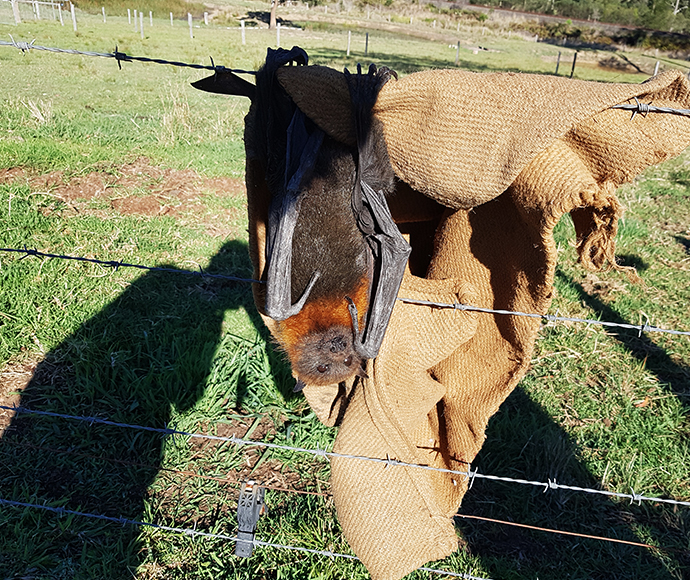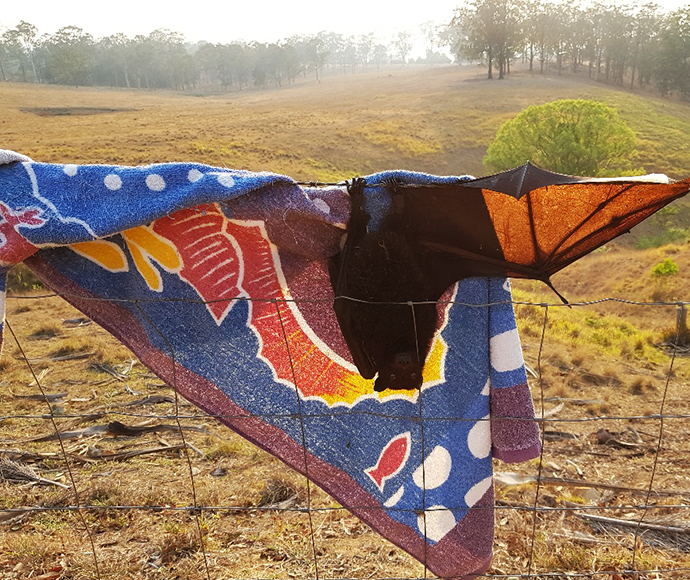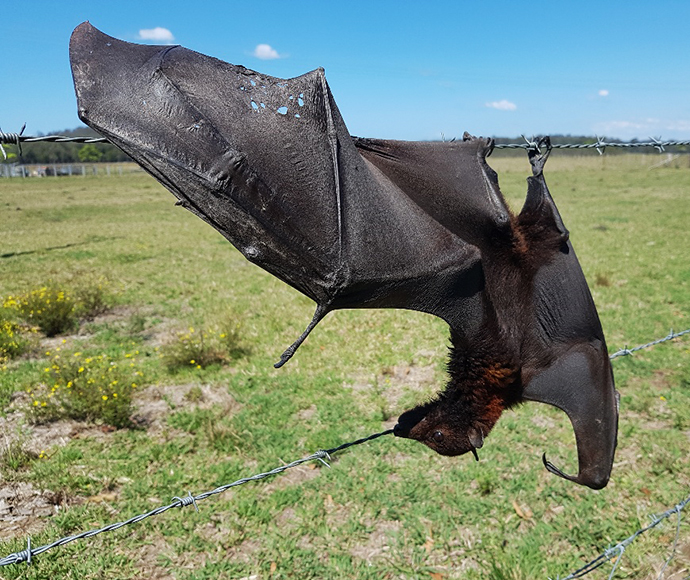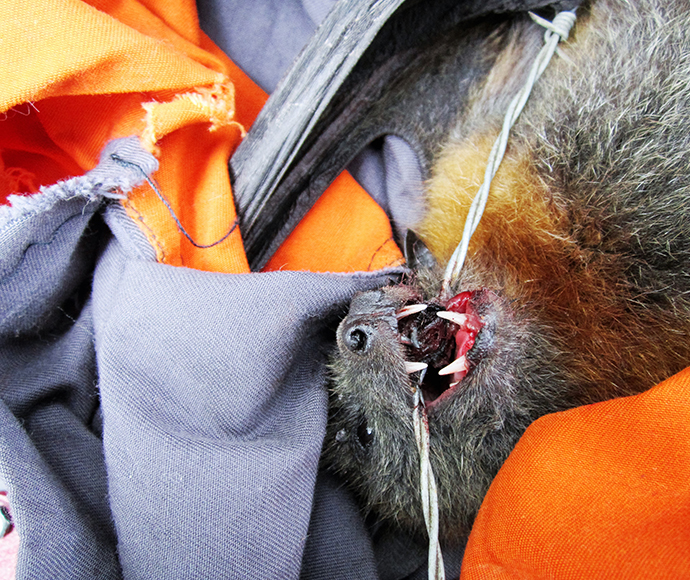Barbed wire fencing might be an inexpensive way of containing livestock within paddocks or providing security fencing, but the cost to wildlife is high.
A number of research articles have highlighted the issue of wildlife entangled on barbed wire:
- Barbed wire fencing as a hazard for wildlife (PDF 191KB)
- A review of bird deaths on barbed wire fences
- The 'Devil's rope': flying-foxes in barbed wire fences (PDF 264KB)
- Using wildlife carer records to identify patterns in flying-fox rescues: a case study in New South Wales, Australia.
Flying-foxes and other animals caught on barbed wire can suffer terrible injuries. Even when they are rescued from the wire, they may not survive.
Landholders can reduce the chances of wildlife sustaining barbed wire injuries by considering the following options:
- Consider whether a fence is required.
- Choose plain wire fencing instead of barbed wire fencing, where possible.
- Replace existing barbed wire fencing with plain wire fencing, where possible.
- Cover barbs where wildlife entanglements occur frequently.
- Make fencing more visible by attaching strands of tape or other materials.
If you find a flying-fox caught on barbed wire
NSW Health advises that the public should avoid direct contact with flying-foxes.
Do not handle flying-foxes unless you have been vaccinated against rabies, have undertaken training and use the proper protective equipment.
If you see a flying-fox caught on barbed wire, contact a licensed wildlife rescue and rehabilitation provider or use the IFAW Wildlife Rescue App to quickly find the closest licensed carer.
Finding animals caught on barbed wire can be distressing to you and others. Eliminating the use of barbed wire in the first instance is ideal.
Visit Rescuing and rehabilitating injured flying-foxes for information on licensed wildlife carers responding to flying-foxes entangled on barbed wire.



